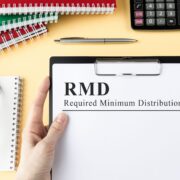If the pandemic has helped you conserve a little or cut down debt, here’s how to keep that momentum going.
As millennials, we have learned more about cash the tough method. From the Great Economic downturn to dizzying student loan financial obligation to a pandemic, there’s been no shortage of life providing us lemons.
While the long-term economic results of the pandemic are yet to be fully understood, you might have noticed one favorable pattern in the brief term: For when your debt may have dropped.
Charge card balances fell by $76 billion April through June, the steepest decline on record, according to an analysis by the Federal Reserve Bank of New York. Research by NerdWallet backed that up, discovering that credit card balances carried from one month to the next dropped 9.15% or more than $600 per household with this kind of financial obligation. Total household debt diminished by nearly $1,000 among homes carrying any type of financial obligation in the very same duration.
If stimulus checks, stopped briefly trainee loan payments, and sticking near the house have helped you cut down financial obligation, here’s how to keep that momentum going.
All Of It Comes Down to the Budget plan
The idea of making a budget plan might have appeared too time-consuming or stressful in pre-pandemic times. However, if you have taken that initial step of taking a look at your spending and saving patterns recently– as a lot of us have out of large requirement– you’re already on your method towards developing a budget plan.
“Take what you have done over the last few months and put it in a spreadsheet,” states Luke Lloyd, a wealth consultant and financial investment strategist at Strategic Wealth Partners in Cleveland.
You have most likely focused on necessary needs this year and compromised wants, or come up with innovative options to have fun rather. Lloyd states the pandemic has made it clear that “we do not always need to go out and spend all this money to amuse ourselves.”
The 50/30/20 spending plan is an easy guiding principle to follow. It containers your net pay into requirements wants, and cost savings plus debt repayment. Utilize the money-saving techniques you have practiced to make this spending plan work– perhaps you’re saving on restaurant meals due to the fact that you’re cooking in the house, or perhaps you’ve been ordering a great deal of takeout however minimizing gas, motion picture tickets or a health club subscription. Take that additional cash and apply it toward the needs or savings and financial obligation containers instead.
Build a Savings Practice
“Minutes like this renew individuals’ focus on financial stability,” states Leigh Phillips, president, and CEO of SaverLife, a nationwide not-for-profit organization based in San Francisco that helps individuals build a cost savings practice through game-playing processes and benefits. Phillips says the company has seen more people register for its savings program in the previous 6 months than in all of last year.
If you weren’t a saver prior to however began socking funds away during the pandemic, keep the money-saving practice going.
“Set up an automated payment from your checking account into a savings account or financial investment account,” Lloyd states.

Prioritize putting any money you have towards an emergency fund since that can keep you from including debt during a crisis. Set an initial objective of $500 to $1,000 in emergency cost savings, which can insulate your spending plan from irregular expenditures that appear, like a car and truck repair. Next, look into satisfying your employer’s retirement savings account match if you have access to one. Finally, pay for a high-interest financial obligation like a charge card, individual loans, or payday advance loan.
If you have cash left over, think about using it toward student loan payments, says Lloyd. Federal trainee loan debtors remain in an automatic interest-free payment time out until January 2021. However, you can still pay now to make things simpler for yourself later.
“Since you can defer the interest, you can reduce the principal” by making a payment, says Lloyd. Your whole payment goes towards the principal at this time, so you’ll have a lower balance when interest resumes which will save you money over the life of the loan.
Request For Aid
Money can be confusing in the very best of times, and especially so when the situation is changing every day and it’s hard to track relief programs you may certify for. Don’t seem like you have to figure it out alone. Discussing money and requesting help is a practice you can take with you long after a crisis is over.
For people who are concerned about what expenses they can postpone, whether they can negotiate with lenders or if they are safeguarded from expulsion or foreclosure, talking about these topics can be emotional, Phillips states.
“There are excellent credit counseling services and financial training services out there,” she says.
“I would motivate individuals to get as many resources as you can.”
Credit therapy organizations use complementary or affordable guidance on handling your debt, building a budget, or even refinancing a home. Check the National Structure for Credit Therapy’s site to find an agency near you. You can likewise check whether you certify for help by calling 211 or going to 211. org.





















Comments